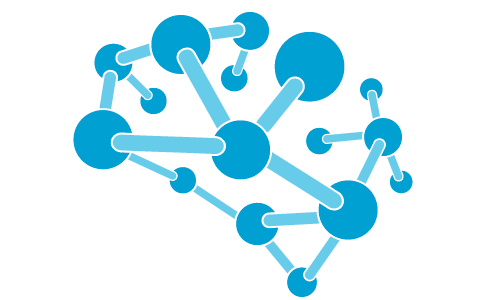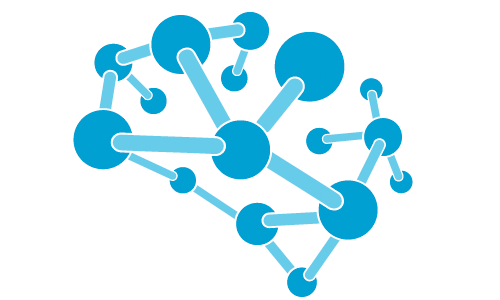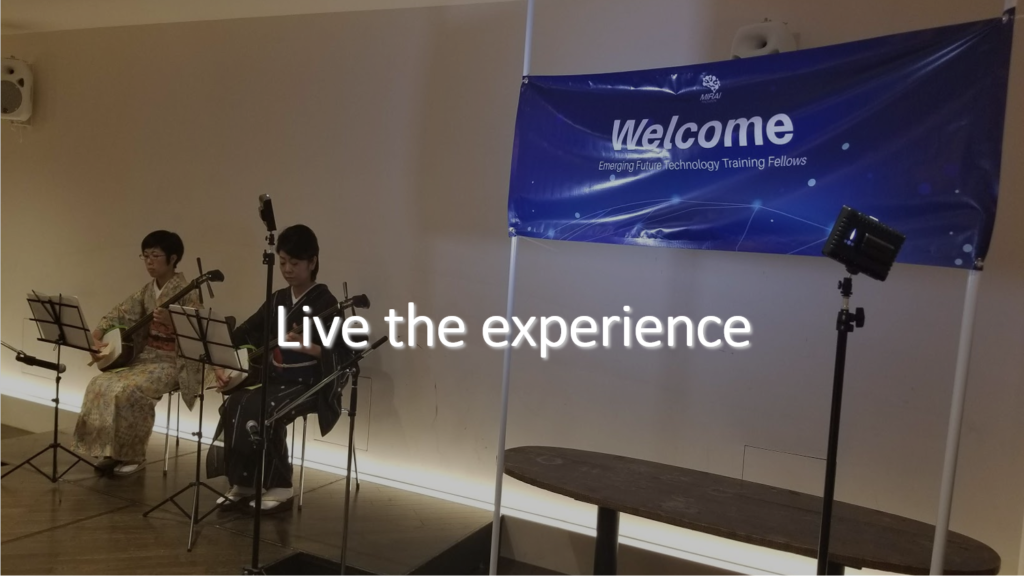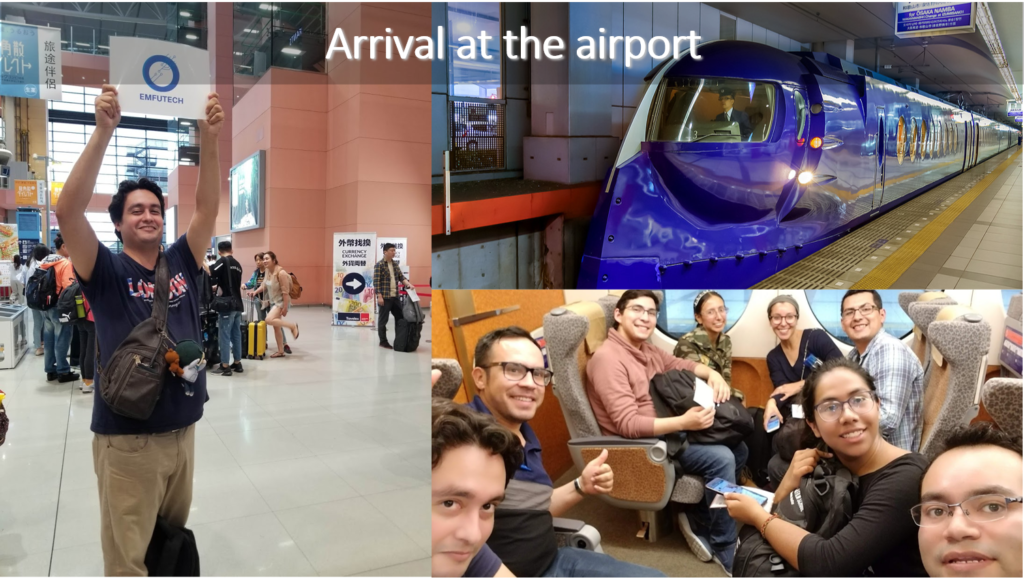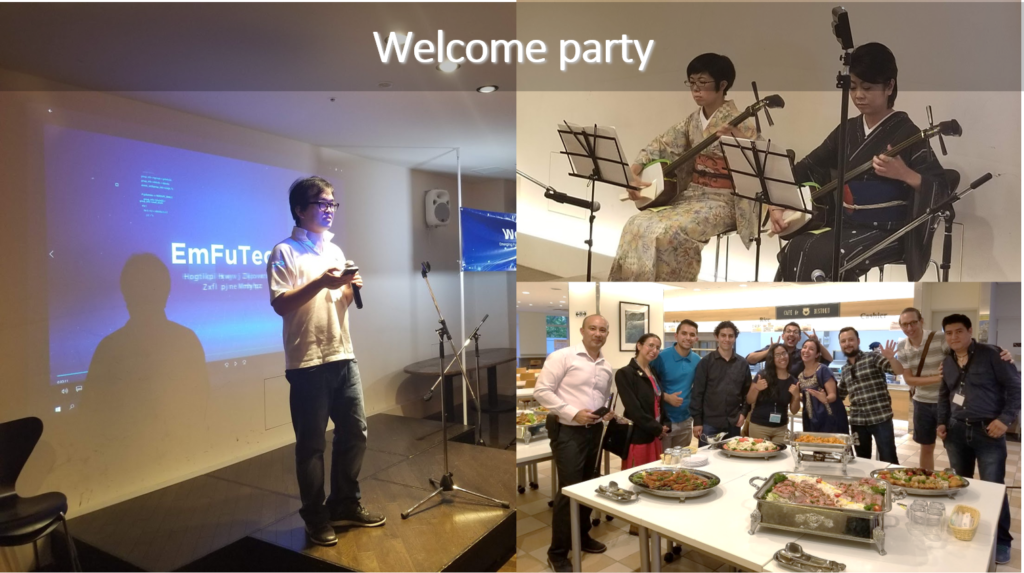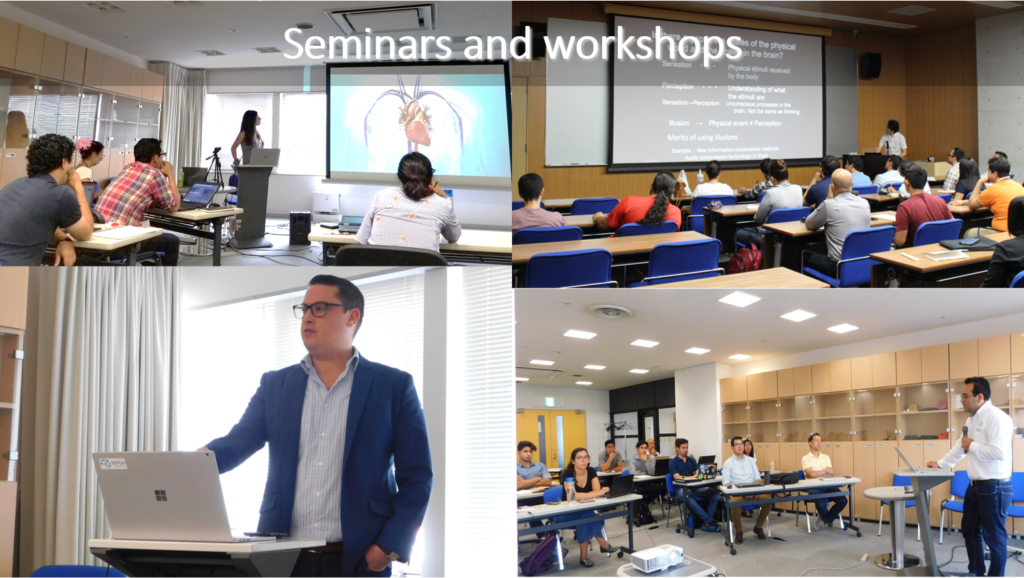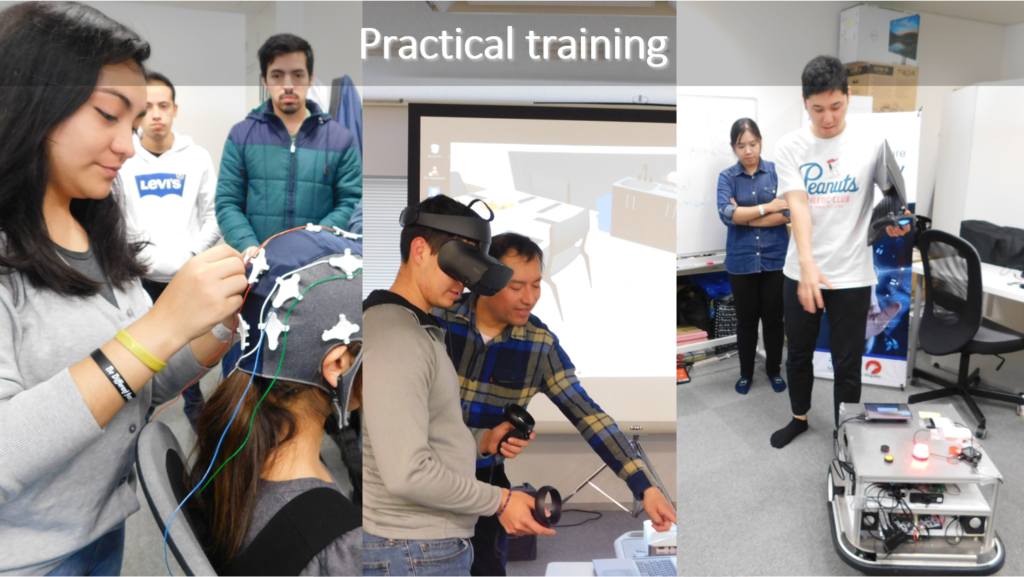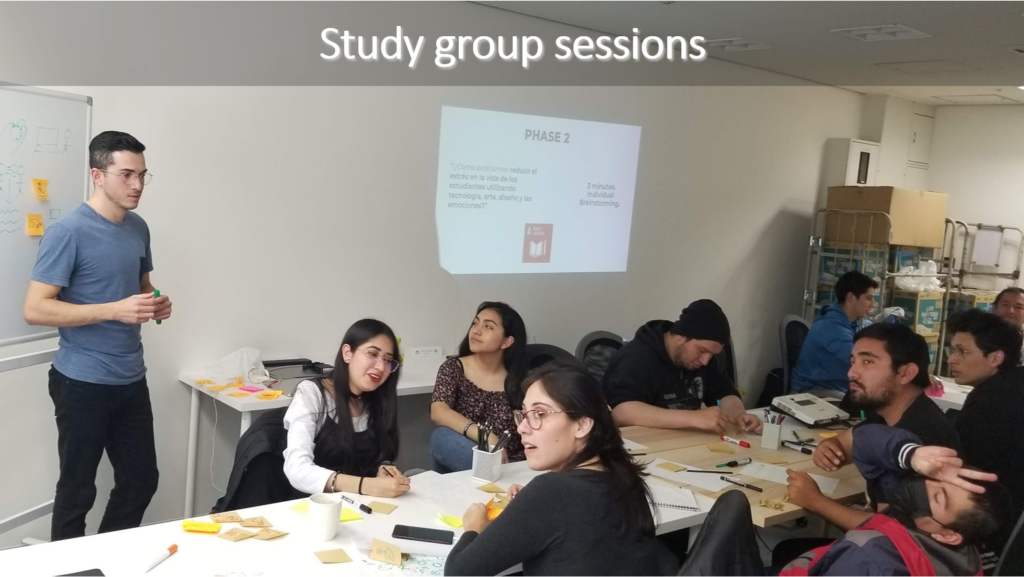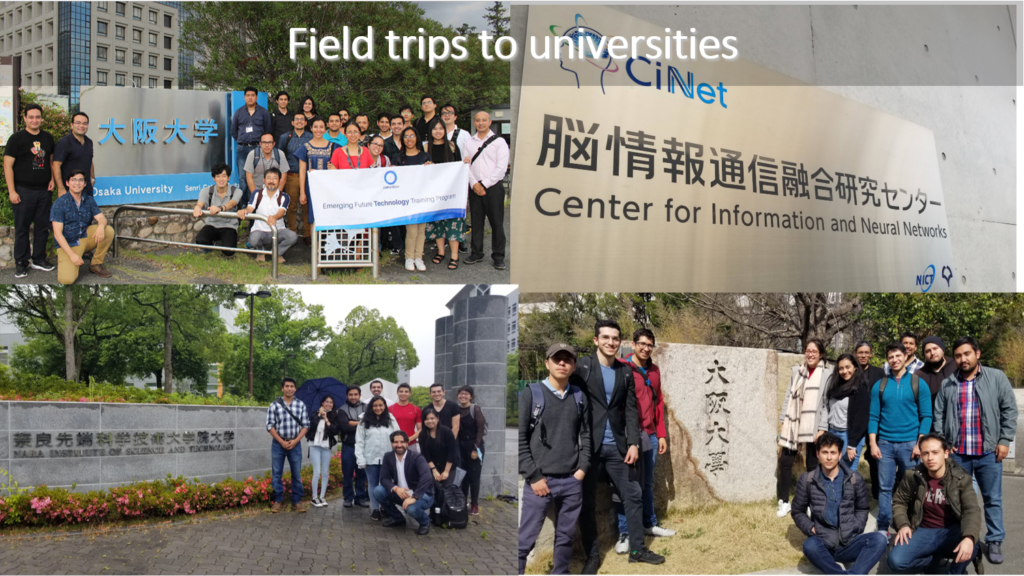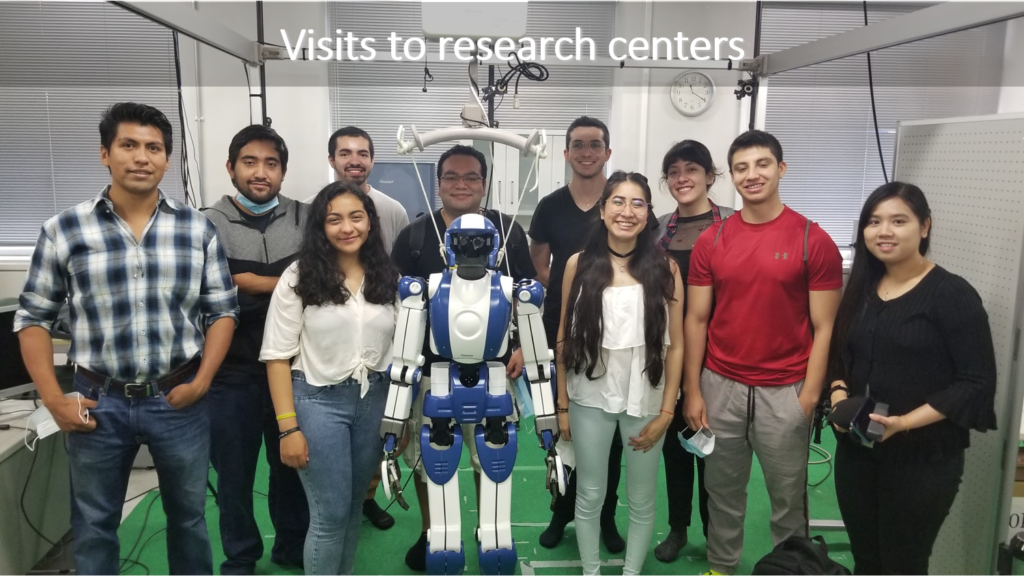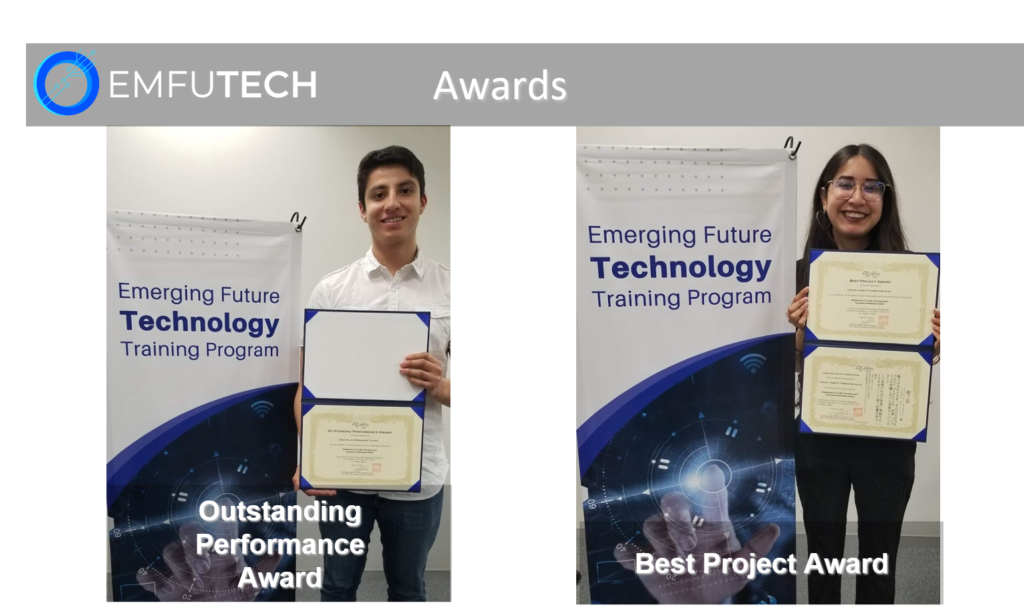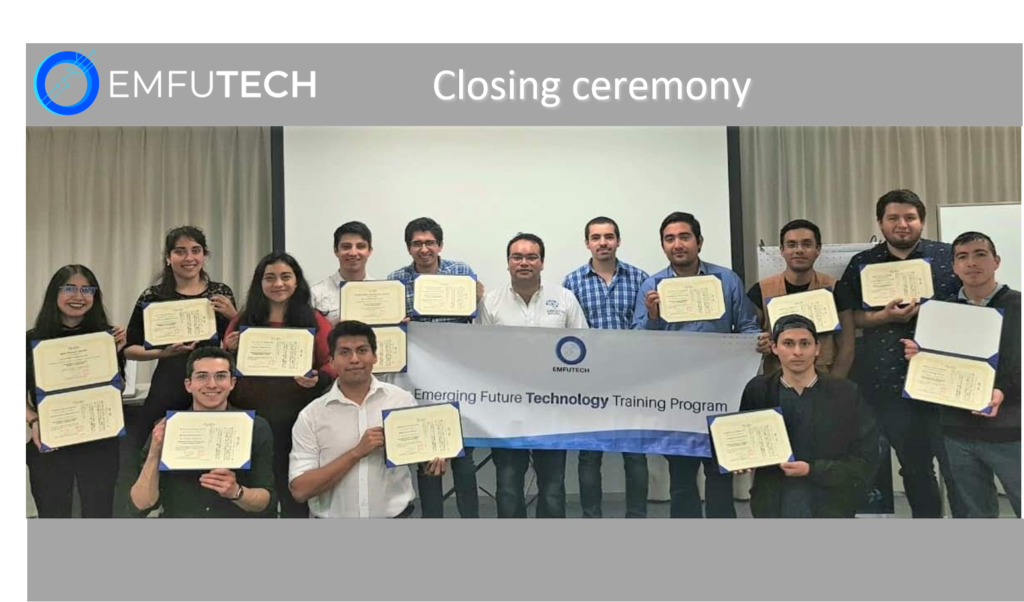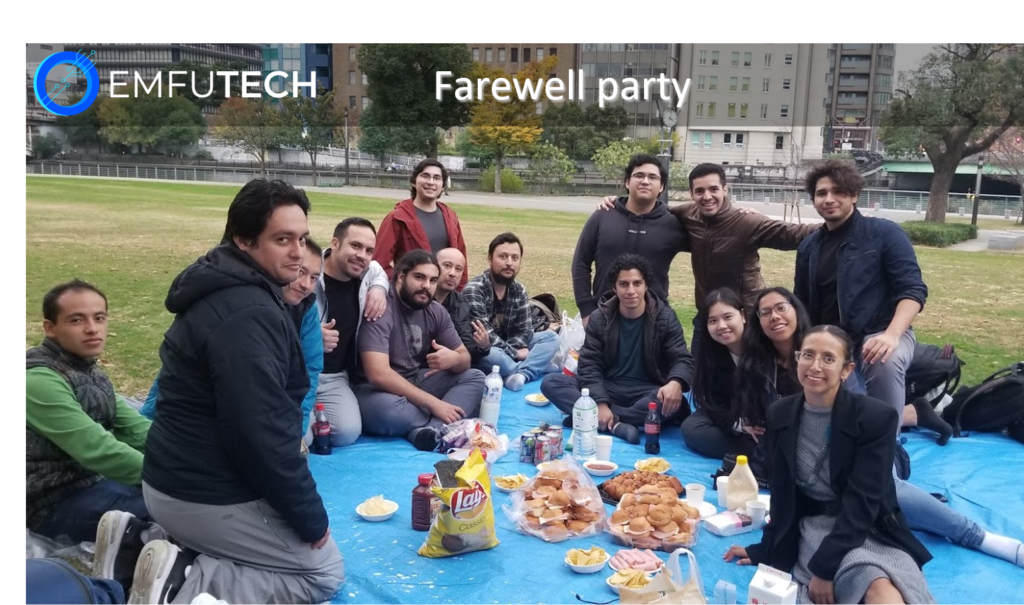Autum 2025
Come to Japan and learn
from the experts
9 weeks emerging technologies program in Japan
Program Dates: September 29th to November 28th, 2025
Application deadline: June 15th, 2025
Come to Japan,
Learn and Live the Experience
The Emerging Future Technology (EmFuTech) Program is a 9-week intensive training experience that combines technical seminars, workshops, mentorship, and hands-on industry projects in Osaka, Japan. Under the guidance of academic and industry experts, participants will gain comprehensive knowledge of cutting-edge emerging technologies while working on real-world challenges from leading Japanese companies, universities, and research institutes.
Participants will be assigned an industry project, analyzing specific challenges, designing innovative solutions, and collaborating with peers to develop technical implementations under the mentorship of experienced professionals.
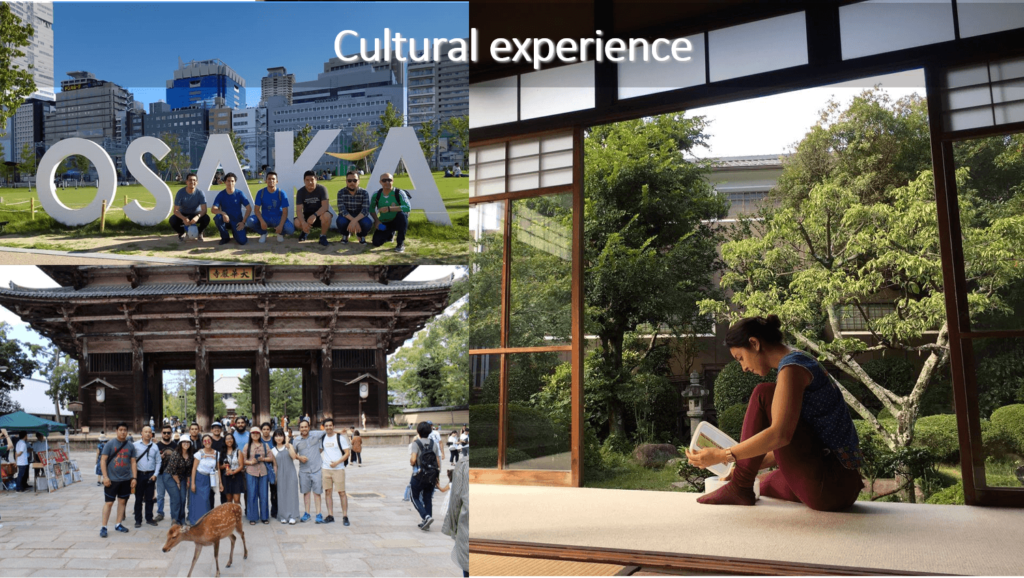
Emerging
Technologies
Industry projects are provided by partner companies and research institutes and will focus on utilizing technologies such as:
- Artificial Intelligence
- Augmented Reality
- Robotics
- Computer Vision
- Internet of Things (IoT)
- Big Data
- Neurotechnology
- Virtual Reality
- Semiconductor Design
- Aerospace Technologies
Projects can be carried out individually or in teams, with mentors guiding participants throughout the research and development process. Industry challenges will span across various sectors, including telecommunications, logistics, finance, mechanical engineering, chemistry, transportation, pharmaceuticals, and the food industry.
We are looking for
innovators
Program Timeline & Key Milestones
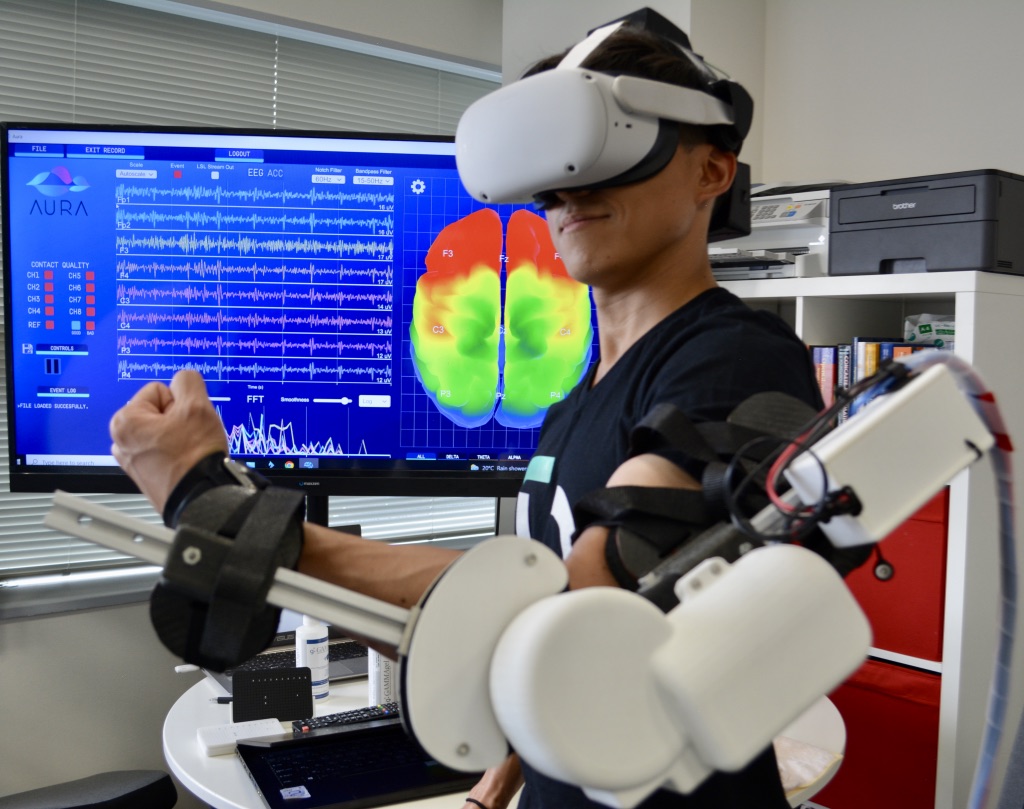
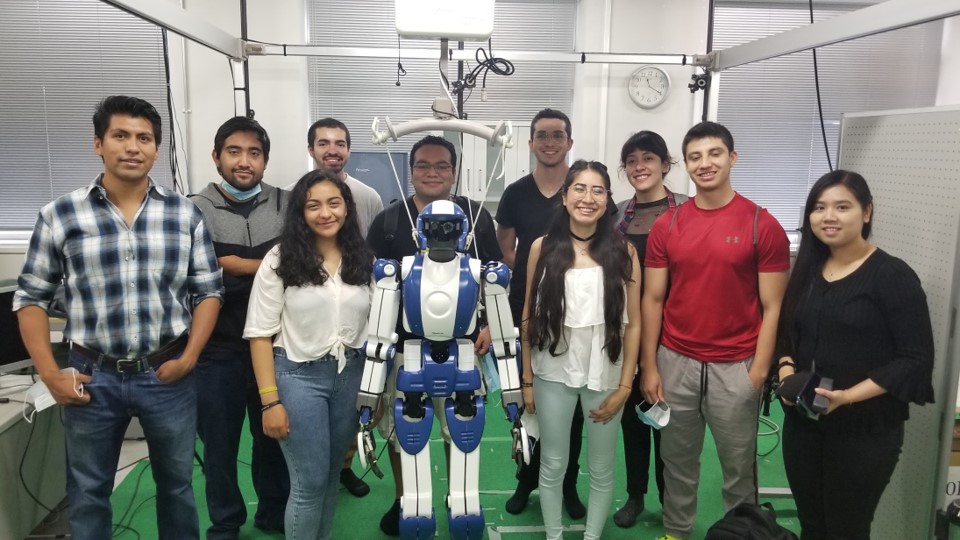

1
Week 1: Opening Ceremony & Introduction
- Welcome and program orientation.
- Intensive seminars and workshops on emerging technologies.
- One-on-one meetings (Level 1 Meeting) with mentors.
2
Weeks 2-3: Seminars & Workshops
- Continued training on advanced technologies.
- Hands-on technical workshops.
- Regular one-on-one mentoring sessions.
3
Week 4: Project Assignment & Plan Proposal
- Participants receive industry project assignments.
- Group presentations (Level 2 Meeting) to propose solutions.
4
Weeks 5-6: Research & Development Phase
- Participants receive industry project assignments.
- Group presentations (Level 2 Meeting) to propose solutions.
5
Week 7: Progress Report Presentation
- Participants present their progress reports.
- Group presentation (Level 2 Meeting) to showcase updates.
6
Week 8: Final Project Refinement
- Refinement and final adjustments to projects.
- Last mentoring sessions.
7
Week 9: Final Presentation & Program Conclusion
- Final Public Presentation showcasing completed projects
- Certificate awarding and networking opportunities
Mentorship Program Details
• Each participant or team will be assigned an expert mentor from academia or industry.
• Weekly one-on-one mentoring sessions to provide guidance, feedback, and technical insights.
• Additional group mentoring workshops focused on skill development and career growth.
• Project evaluations and milestones tracking to ensure structured progress throughout the program.
Technical Facilities & Resources
• Participants will have access to advanced technology labs equipped with cutting-edge tools for AI, robotics, computer vision, IoT, aerospace, and semiconductor research.
• Availability of VR headsets, EEG monitoring systems, robotic platforms, and high-performance computing clusters.
• Collaboration spaces to facilitate teamwork and project development.
• Dedicated IT support and access to cloud-based computing resources.
Cultural Experience & Networking
Engage
In language exchange sessions, cultural workshops, and sightseeing tours to immerse in Japanese culture.
Visit
To leading technology companies, innovation hubs, and research institutes to gain insight into Japan’s tech ecosystem.
Networking
Events with industry leaders, researchers, and entrepreneurs, fostering potential career and collaboration opportunities.
Social
Activities such as tea ceremonies, calligraphy classes, and traditional Japanese performances.
Post program Opportunities
- Internship Placements: Recommendation for internships at leading Japanese technology firms and research institutes.
- Research Collaborations: Continue working on EmFuTech projects with Japanese universities and research centers.
- Career Referrals: Access job referral programs that connect with potential employers in Japan and internationally.
- Entrepreneurial Support: Guidance on funding opportunities, accelerator programs, and business connections.
- Continued Mentorship & Alumni Network: Access to an exclusive alumni network for ongoing collaboration and career growth.
Emfutech
location

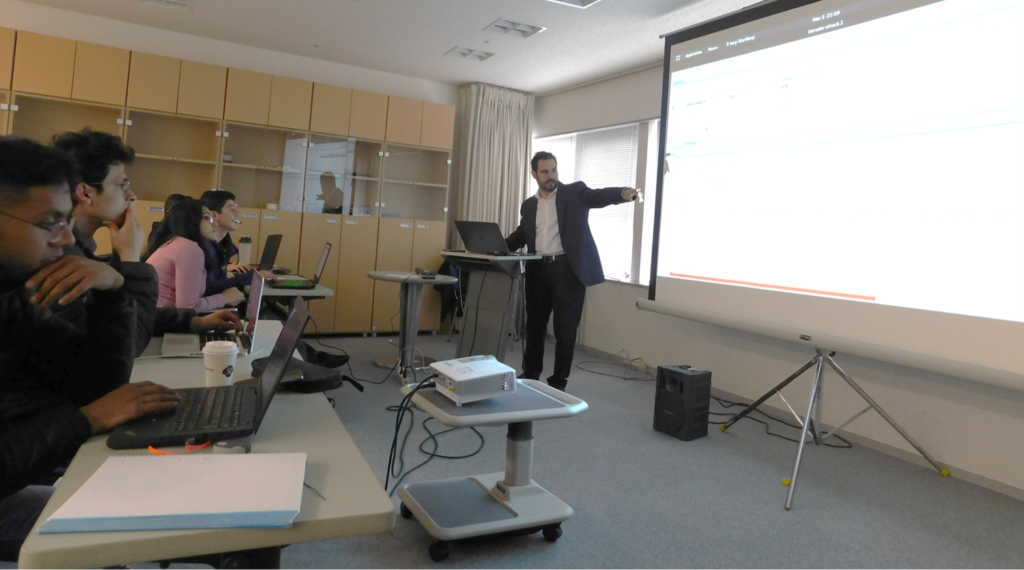
The EmFuTech Program takes place at the Asia Pacific Trade Center (ATC) in Osaka, Japan, a world-class venue that hosted the G20 World Leaders Summit in 2019. It is also one station away from the location of Expo Osaka 2025, providing participants with proximity to one of the most significant global events in innovation and technology.
Available Equipment:
- Prototyping Area – Equipped with tools and workspaces for rapid design and development.
- Electronic Boards & Components – Includes microcontrollers, sensors, and processors for robotics and IoT projects.
- Telepresence Robots – Enables remote research collaboration.
- AR & VR Headsets – For immersive virtual and mixed reality development.
- 3D Printers – High-precision printers for rapid prototyping and design testing.
- Drones – AI and autonomous flight research for navigation and aerial applications.
- Physiological Signal Acquisition Devices – Advanced tools for neurotechnology, measuring brain activity, muscle signals, and heart rate.
- High-Performance Computing Systems – Workstations equipped with GPU acceleration for AI and deep learning tasks.
Program includes:
- Pre-departure orientation
- Guidance support in Japan
- Welcome reception & Inauguration ceremony
- 2 weeks of technical seminars and workshops
- 7 weeks of industry-driven research & development
- Weekly one-on-one mentorship from Mirai Innovation researchers
- Access to high-tech laboratory equipment and facilities
- Field trips to universities and research institutes
- Diploma upon successful completion
- Professional video documenting your experience
- Networking opportunities with top researchers, professors, and industry leaders
- Recommendation letters for outstanding participants
- Opportunities to publish academic papers on your project
- Participation in international competitions
- Potential job opportunities with Japanese companies
- (Note: Taxes, accommodation, meals, and flight tickets are not included.)
Program Fee
Registration Fee
-
(non-refundable)
Program Fee
-
(Taxes not included)
Scholarships & Sponsorship Opportunities
• Scholarships: Accepted participants can apply for financial aid options to cover program expenses.
• Sponsorships: Companies can support participants and propose custom industry projects to be developed within the program.
Visa & Travel Assistance
• Support in obtaining necessary travel documents and visa applications.
• Guidance on the visa process and required documentation for international participants.
• Recommendations on travel arrangements, arrival procedures, and local accommodations.
• Pre-departure orientation covering cultural adaptation, safety guidelines, and essential contacts.
Autum 2025
Join Mirai Innovation - Live the Experience in Japan!
Submit your application to our program.
Application deadline: June 15th, 2025
Projects
These are some of the projects developed during previous EmFuTech editions*
Logistic robots are useful to move goods into facilities, but normally these types of robots require special infrastructure or a controlled environment to operate correctly. In this project, simultaneous localization and mapping (SLAM) is used to achieve autonomous and semi-autonomous navigation capable of collision avoidance. Moreover, the information from cameras and a LIDAR sensor is used to detect when a human is present (or not) in the scene, as well as, to track the person using AI. This functionality can be used to help a human operator to handle and transport heavy loads from one place to another in a non-controlled environment.
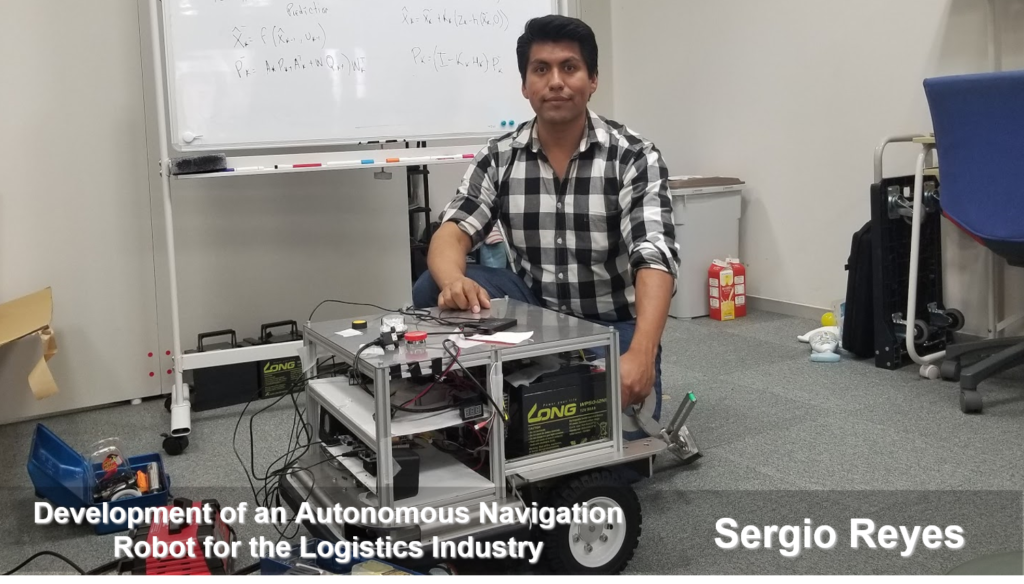
Around the world, the health sector is affected by the overgrowth of the population in proportion to the number of doctors and nurses that exist per person, which is why the patient does not normally receive quality care from health sector workers. Moreover, nowadays due to human-to-human contact, the medical staff is exposed to dangerous diseases such as COVID-19, thus creating the need to develop medical assistant robotic systems that can help relieve these situations. The purpose of this project is to develop a voice bot that can provide pre-diagnosis to patients quickly and efficiently while protecting our human resources in hospitals.
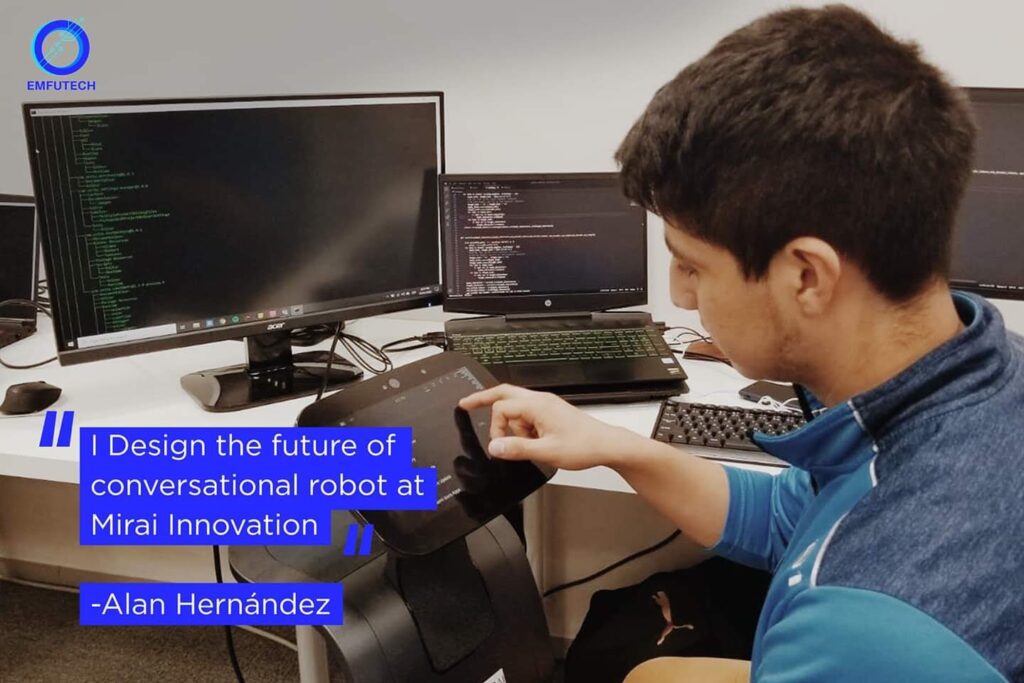
Spinal cord injury (SCI) affects over 378,000 individuals each year. Incomplete tetraplegia is the most common symptom of SCI, and restoration of the use of hand and arm is the highest priority between tetraplegics. This work shows the development of a system for rehabilitation of the upper limb for people with spinal cord injury through Functional Electrical Stimulation (FES). The proposed system uses AI-based algorithms to recognize hand-arm movements from a therapist and replicates these movements into the patient through electrical stimulation. The functional prototype presented in this work demonstrates the feasibility of the system to be used in rehabilitation for the recovery of upper limb movement.
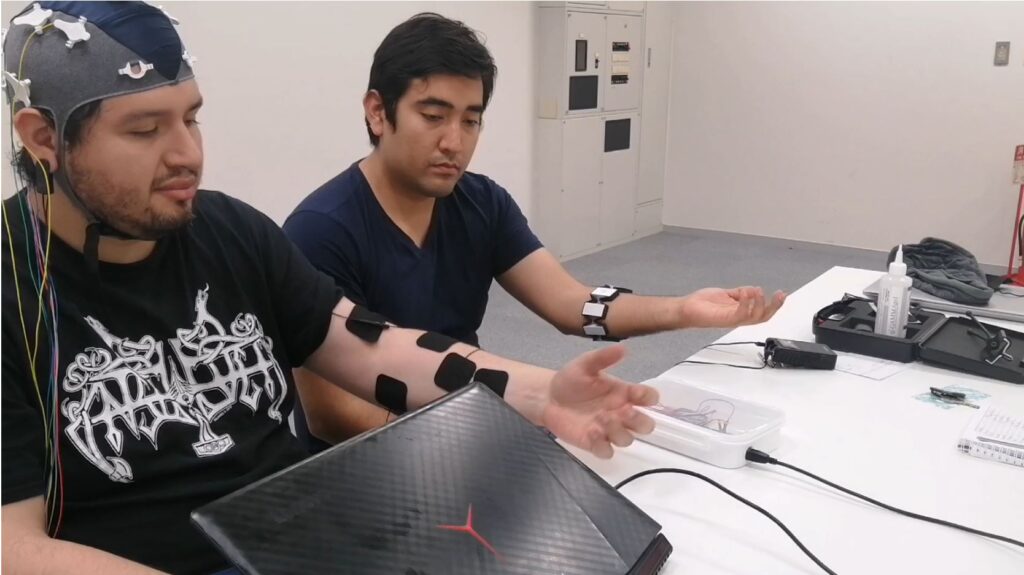
Online media content – whether it is educational, entertainment, social, or marketing content – can be highly optimized to improve the experience of the consumer if the content design takes into consideration the consumer’s preferences and emotions. A novel approach to measure a person’s preferences and emotions is by monitoring biosignals, such as brain signals, eye movement or facial expression, and calculate the level of visual and cognitive attention when the person observes the media content. With this in mind, in this project, we developed MIRAISense, a biosignal analysis platform that analyzes three types of data (EEG, Eyegaze, FaceEncoding) to see the reaction when a person observes video commercials or online classes. The software then calculates the cognitive engagement, auditory engagement, visual engagement and creates a representation to highlight the important segments of the video.
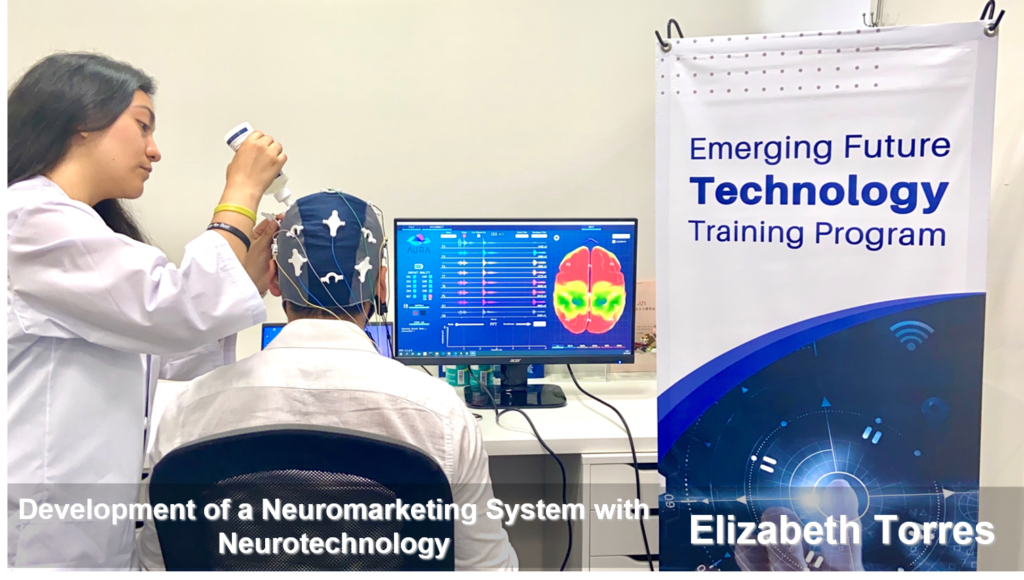
Unmanned vehicles have been advancing year after year, from UAV’s better known as drones to different ground vehicles mainly with movements based on wheels and even aquatic vehicles, which can be submerged to significant depths. Different hybrids of these have been created, mainly submersible drones, which can move underwater with the help of their propellers. This type of vehicle can be used for rescue work, mainly due to its size and versatility, allowing each one to operate in their respective environment with few limitations. However, it is important to emphasize that no type of hybrid has been created that can be deployed in the 3 environments (Air, Earth, and Water), which is why this project aims to develop a functional robot that can fly, walk and move in the water.
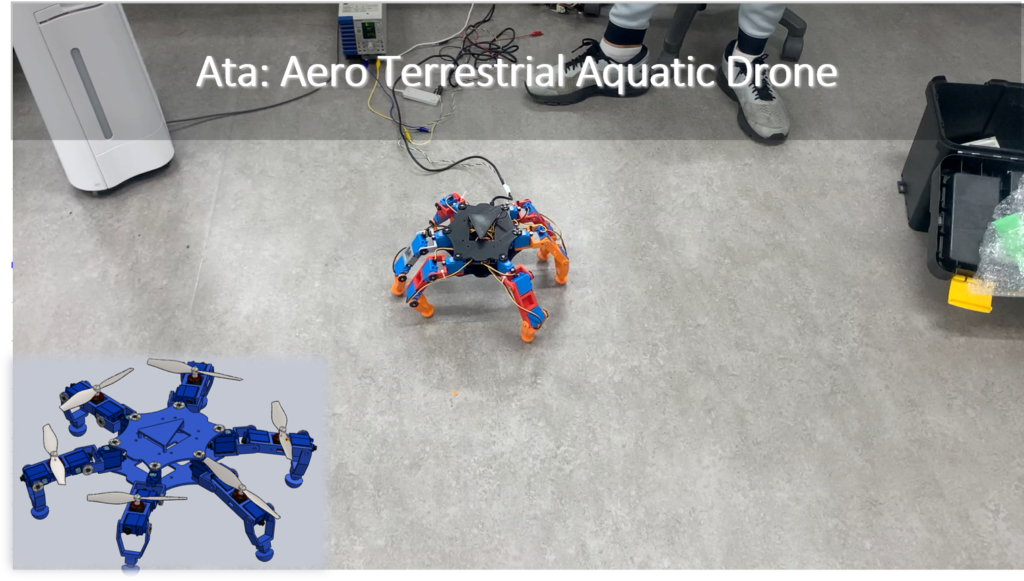
We live in a world that revolutionizes at the speed of light, thus bringing us new unknowns about how new technologies impact our daily basis, in the case of neurotechnologies it is possible to see that they will give us answers to many of the challenges that different industries face today, however, the development of a technology with such an impact also requires a great responsibility which throws us questions on how to deal with ethical, legal, social impact as well as safety issues. This is why prestigious institutes such as The Institute of Electrical and Electronics Engineers (IEEE) have developed proposals including the guideline “STANDARDS ROADMAP: NEUROTECHNOLOGIES FOR BRAIN-MACHINE INTERFACING”. In this project, we had the opportunity to analyze this document with the help of experts of international stature in order to obtain a broad vision that helps us to make recommendations that lead to the early adoption of both neurotechnologies and standards in the near future.
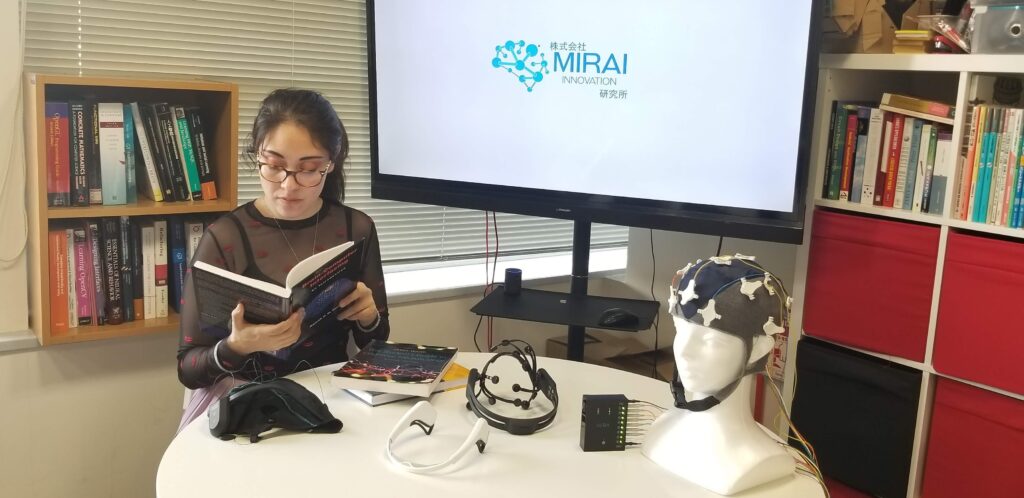
The education industry is currently evolving and nowadays online learning has begun to acquire greater interest than traditional face-to-face classes. Nonetheless, there are several issues that slow down the process to make online education an efficient and competitive learning approach. On one side, pre-recorded video lessons do not take into consideration the visual or auditory attention of the student and cannot adapt to the student’s learning capabilities. On the other side, during live lessons, teachers do not have the ability to know if the students are paying attention. Therefore, there is a need to develop systems that can optimize the learning experience by monitoring the student’s attention to personalize the educational content or provide feedback to the human teacher. One way to achieve this is through neurotechnology that can monitor brain activity. In this work, we present WAVEX , a wearable device that aims to solve the future landscape of effective online education. WAVEX is an EEG headset adapted with a VR headset, that can monitor the brain activity of the user while attending an online class.
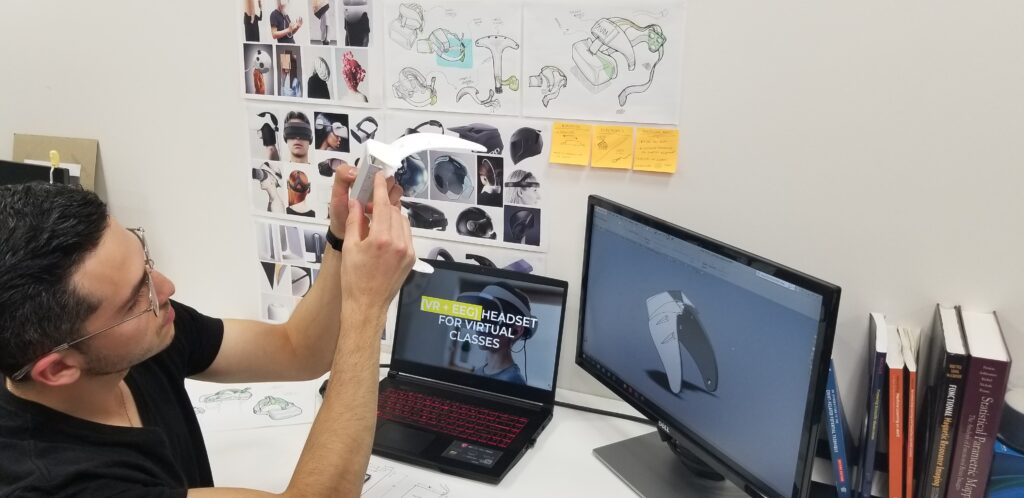
Bioprinting is an emerging technology that will revolutionize the manufacturing of human tissue and organs. Currently, bioprinting has two main issues: it is an expensive technology and has a lack of versatility. Previous works have presented Handheld Bio Dispensers or 3D bioprinters, but only as a single-mode use, not as a dual mechanism that covers both needs. The main objective of this project is to create an extrusion-based dual bioprinting system that can be implemented as a build-in extruder in a 3D conventional printer and as a handheld dispenser device for manual use for covering both needs.
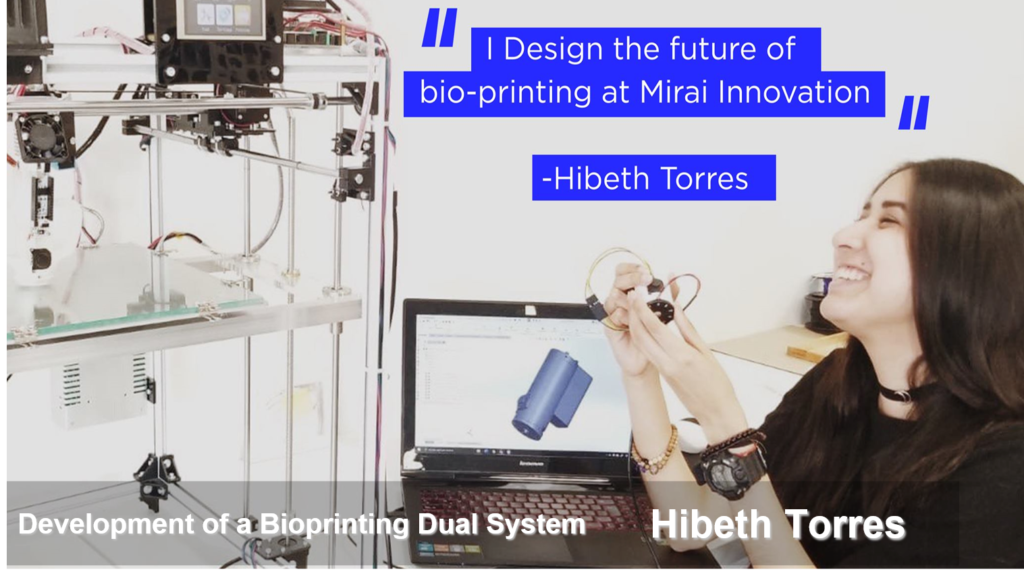
* Every year we offer new projects, but some of the projects of EmFuTech 2022 may be a continuation or upgrade of previous projects.
Meet the winners of the "Best Academic Project" Award
Come to Mirai Innovation, live the experience in Japan
Our Student' Voices
Who can apply?
-Citizenship from a country that Japan has diplomatic relationships
-Conversational English level equivalent to TOEFL 550pts (Although no certificate is necessary, English competency will be evaluated during the interview)
– Recommended experience in any of the following programming languages as C, C++, C#, Java, Python, or Web programming.
-Recommended experience working in other technology projects (hackathons, competitions, research projects, technology management projects, etc.)
– Have your own personal computer.
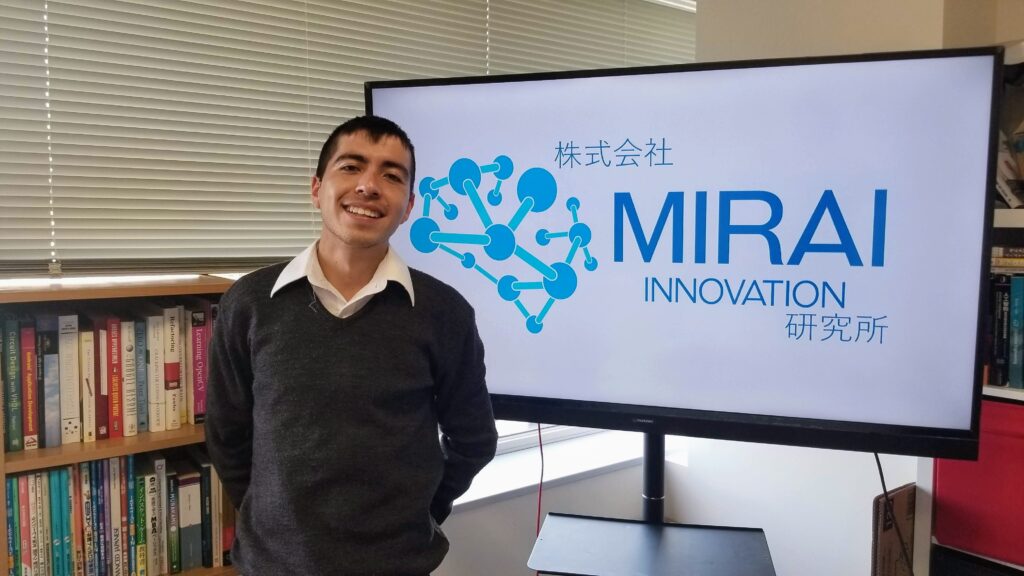
Application Process
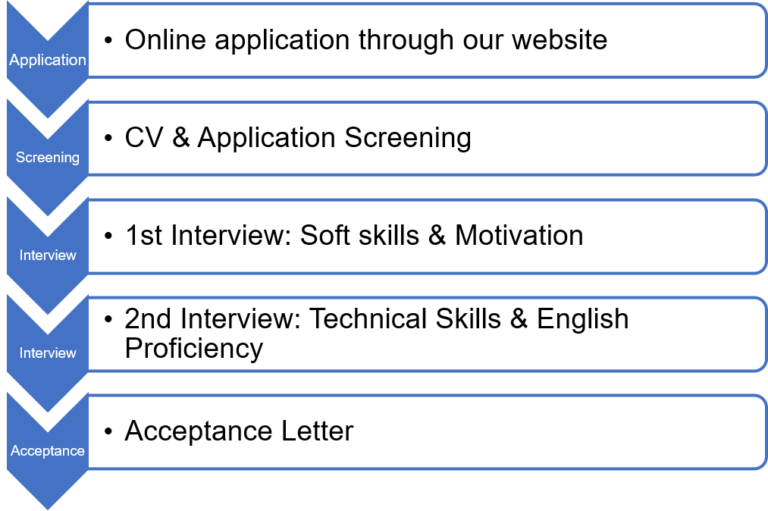
Only
top 20
participants will be selected
Sponsors
Do you know a company that might be able to sponsor your participation at EmFuTech?
We offer sponsorship plans for companies so they can also benefit from your participation. Companies can even propose a project to be developed at EmFuTech!
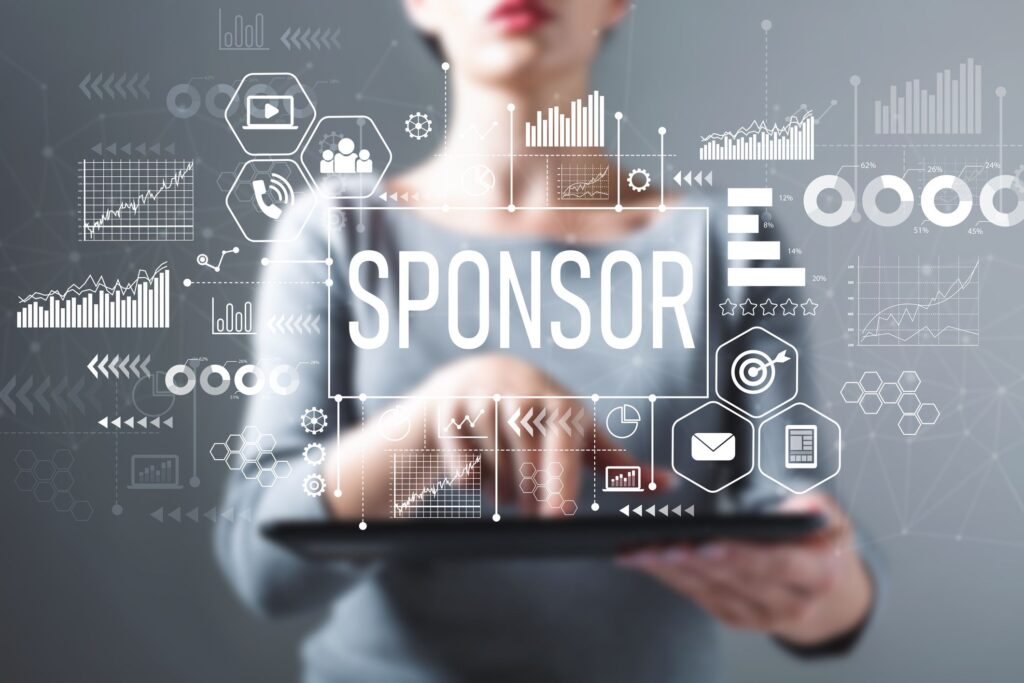
Partners and Sponsors
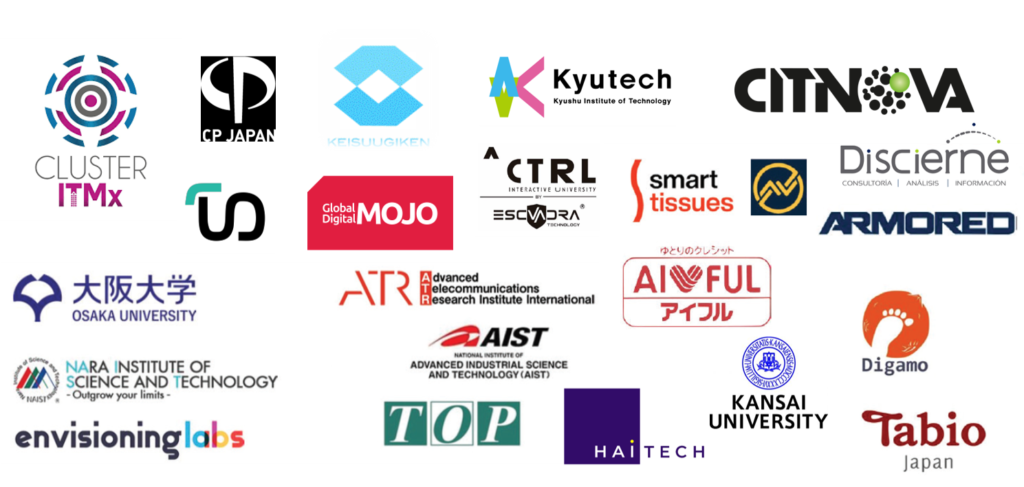
Graduates from
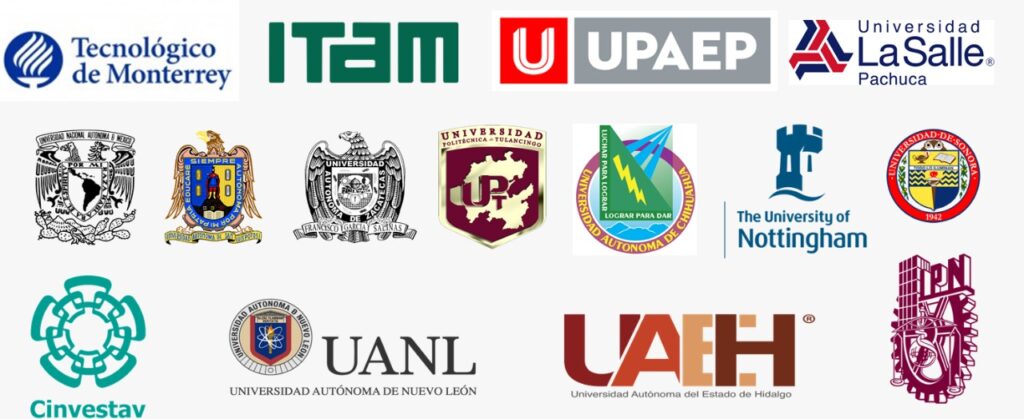
FAQ
Yes, you are still eligible to apply. If accepted you will need to immediately apply for a passport.
All the seminars and meetings are taught in English; however, the program does not require any certificate or test proficiency. The capability of communication in English will be evaluated during the interview.
No, once you have submitted your application for review you will not be able to make any changes or add additional information.
In most cases, a visa will not be necessary. We invited you to revise the conditions for short stays issued by the Japanese embassy or consulate in your home country. In specific cases we can provide an acceptance letter to the program.
Our programme does not require professional experience.
According to the phase of the application process you will be updated by the email address emfutech@mirai-innovation-lab.com Please, review your spam folder in order to get our contact messages.
Yes. You can reapply for the programme for the next time. Resubmission requires a completely new set of application documents.
We currently do not offer accommodation options. The program can provide an external service for a fee of 250 USD that includes searching for accommodation within Osaka, arrangements of basic services, pick up at the airport and drive to the residence.
We anticipate that it will cost you approximately 1,000 USD per month to live in Osaka. Therefore, the total estimated cost is 8,000 USD for three months. Below we provide an estimate of average costs for monthly housing and living expenses for students in Osaka: Rent (central Osaka): 56,000 JPY, 500 USD Utilities (gas, electricity, water): 8,000 JPY, 72 USD Compulsory National Health Insurance: 3,000 JPY, 28 USD Communication (mobile, internet connection): 5,000 JPY, 45 USD Food: 35,000 JPY, 315 USD Transportation: 5,000 JPY, 45 USD Monthly total: 112,000 JPY / 1,013 USD. Here you can consult a summary https://www.numbeo.com/cost-of-living/in/Osaka
Other academic fields can apply for the training program. The academic background will be considered. We strongly recommend reading the information and have full disponibility for being taught about technical areas of technology and innovation.
Students are welcome to our training program, as long as candidates fulfil the requirements of the program.
Either the Training Program or partnership companies cannot assure the participant a job opportunity.
